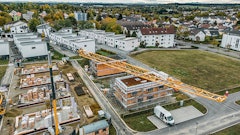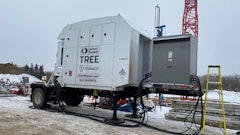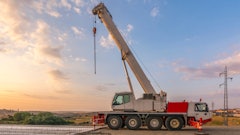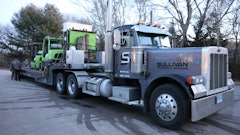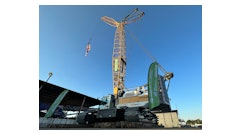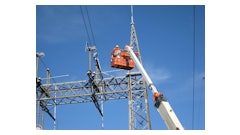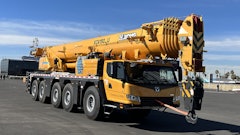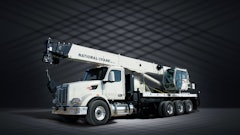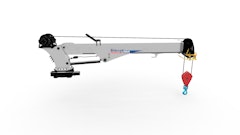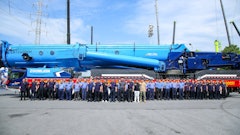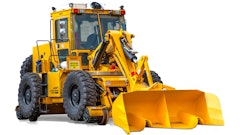
One of the world’s largest infrastructure projects is happening right now in Riyadh, Saudi Arabia — a 53-mile light-rail public system known as the Riyadh Metro, or King Abdulaziz Public Transport Project. Planning for the $22.5-billion-dollar project started in 2013 when the BACS consortium, comprised of Bechtel, Almabani General Contractors, Consolidated Contractors Company and Siemens (BACS) was awarded the contract for design, construction, train cars, signaling, electrification and integration of the new lines to the system. To meet the aggressive timeline of completing construction by the end of 2018, the BACS consortium has enlisted the expertise of subcontractors on the project.
To aid in the erection of a launching gantry for a light-rail bridge, the BACS consortium hired local lifting solutions specialists, Mohammad Abdullah Al Areedh Lte. Co. to raise the 142 tonnes beams and supporting winch 55 feet in the air using two Terex AC 500-2 all terrain cranes.
Tight operations
The launching gantry lifts required roads to be closed, creating the need for urgency on this part of the massive construction project. “Our ability to quickly transport, setup and rig the cranes was critical to the overall project and our reputation in the market,” says Mohammed I Alrasheed, operations manager at Mohammad Abdullah Al Areedh. “We were able to drive both cranes to the site and used five flatbeds per crane for transporting additional material, such as counterweight. Once on site, we had both cranes ready to work within four hours with the hard work of five people, which was much faster than what we estimated.”
One of the more challenging aspects of the job was the tight setup and working conditions. “Our crew was working in the middle of the road, so there was very little room for cranes and operators to maneuver,” explains Alrasheed. “That was one of the reasons we selected the Terex AC 500-2 cranes from our fleet. That particular model has a compact base, which made it easier to position than some of the other cranes in our fleet.”
Working together
The cranes were configured to a boom length of 124 feet and outfitted with 180 tonnes of counterweight. Alrasheed also noted that each crane was equipped with the Terex Sideway Superlift (SSL) telescopic boom attachment.
To secure the beams to the supporting bases, the cranes worked in tandem to lift each beam 55 feet at a radius of 53 and 59 feet, respectively. The weight of the beams was evenly distributed and each crane was responsible for 71 tonnes. It took the Mohammad Abdullah Al Areedh crew of seven just 10 days to complete the project. The BACS consortium was pleased with the outcome and crew’s professionalism.
Cranes on the job
The Terex AC 500-2 cranes used to install the launching gantry on the Riyadh Metro project is part of the company’s extensive line of all terrain cranes. With a carrier length of just 56 feet, the crane is the most compact eight-axle crane in its class. It has an impressive system length of 478 feet through the use of the unit’s luffing fly jib.
The crane offers enormous power across the full lifting capacity range because of the design of the main boom cross-section and the reinforced SSL. Short setup times and the IC-1 control system's ease of use make for smooth crane operations and comfortable working conditions. The drive design of the crane provides outstanding transfer of engine power, yielding excellent performance on both the highway and the jobsite.
Constructing the light-rail system
With an anticipated population increase from 5.7 million people to 8.2 million by 2030, Riyadh city officials have deemed the project urgent to alleviate traffic congestion. A total of 833 Saudi engineers are being engaged on the project. Work began in 2014 and is expected to be completed by the end of 2018.




